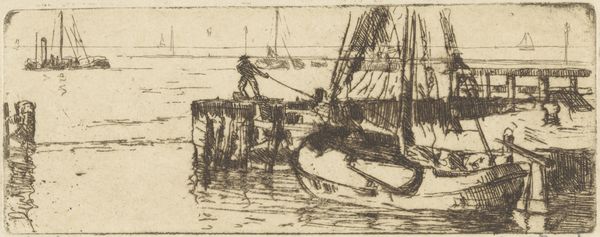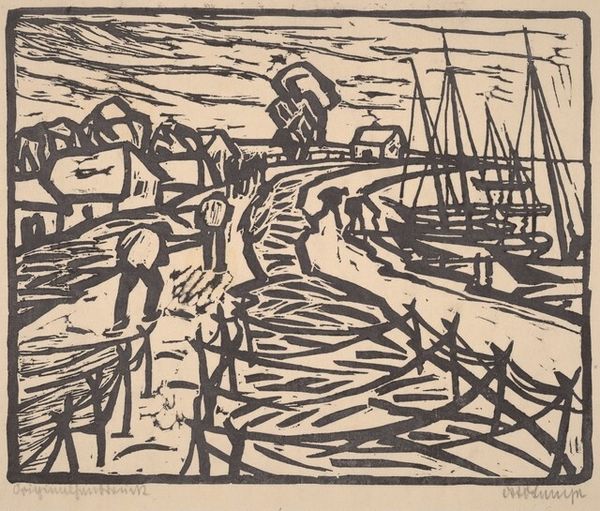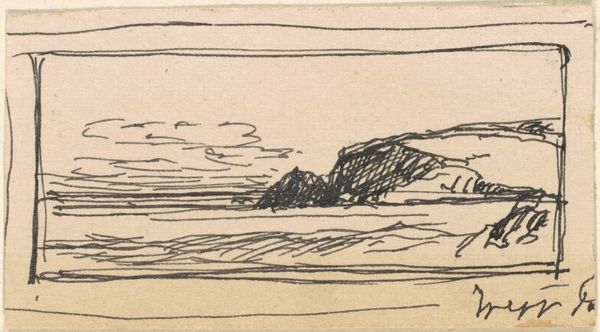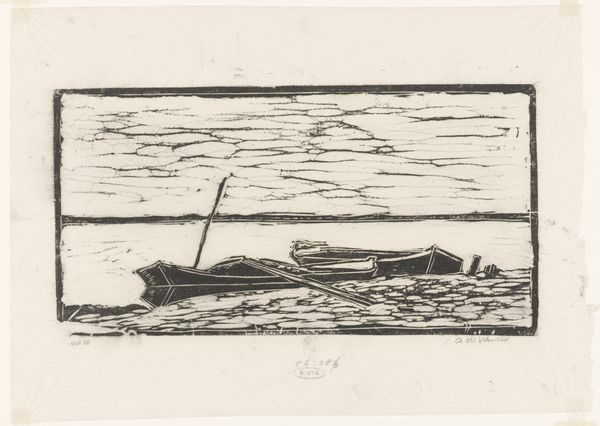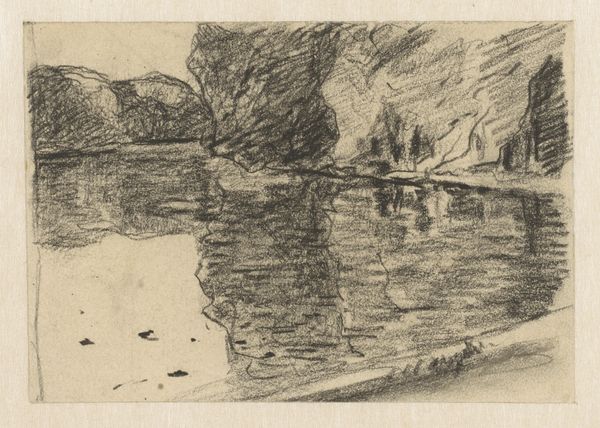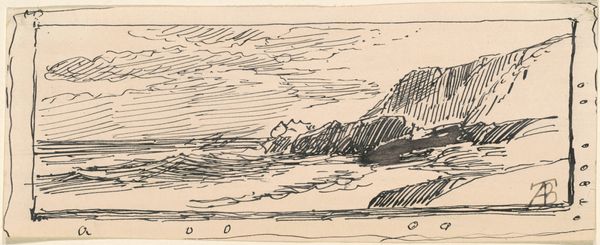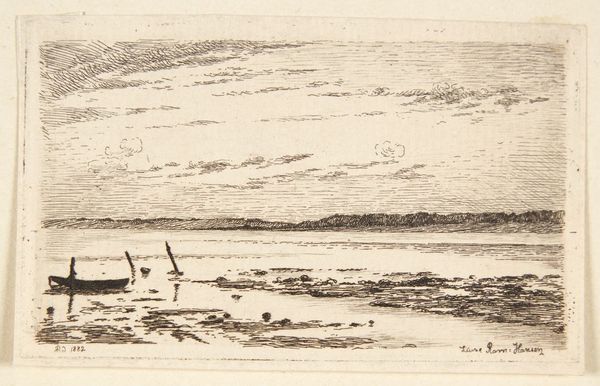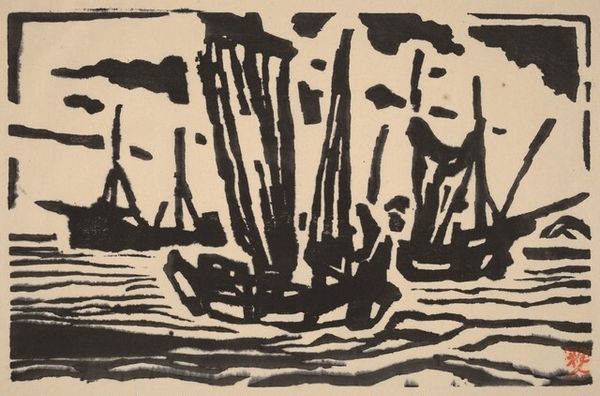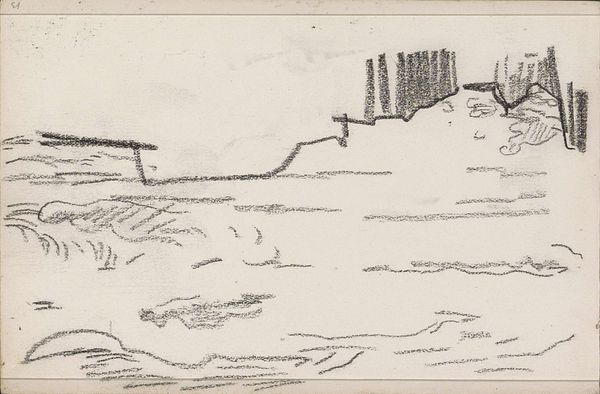
drawing, print, ink, woodcut
#
drawing
#
ink drawing
# print
#
landscape
#
ink
#
geometric
#
expressionism
#
woodcut
Copyright: Public Domain: Artvee
Editor: This is Ernst Ludwig Kirchner’s "The Sea near Staberhuk," created in 1908. It's an ink and woodcut print. I’m struck by how stark it is, this high contrast of black ink on the paper creating an almost unsettling mood. What’s your perspective on this piece? Curator: That starkness is key, isn't it? It's expressionism boiling down landscape to its most visceral elements. This was a period of intense social change and anxiety in Germany. Think about the rise of industrialization and the accompanying sense of alienation. Editor: So, this is reflecting that alienation? Curator: Exactly. Look at the roughness of the lines, the almost violent way the ink is applied. The horizon is compressed, the sea feels almost claustrophobic, despite its expansiveness. It mirrors a society feeling increasingly confined by the rapid changes around them. How do those jagged lines of the waves strike you? Editor: They feel…agitated, restless. Like the sea is churning with something unspoken. Curator: Precisely! Kirchner and the Brücke artists were interested in challenging academic artistic conventions. They wanted to convey raw emotion and challenge viewers. Do you see that reflected in the work's focus on essential forms rather than detail? The sail boat is roughly hewn and isolated, like humanity adrift in modernity. Editor: I do. The lack of detail makes it more about a feeling than a literal depiction of the sea. It makes me consider what being confined even in something as open as nature feels like. Curator: And that's where its power lies! By simplifying the image, Kirchner amplifies the emotional weight of the scene, making us confront the disquiet simmering beneath the surface of early 20th century life. This piece allows for conversation on the mental state during this historical period, reflecting upon modern anxiety. Editor: I didn't initially consider it in the context of social change, but that really does reframe the experience. Now the anxiety is far more palpable, and gives the print a deeper resonance.
Comments
No comments
Be the first to comment and join the conversation on the ultimate creative platform.
